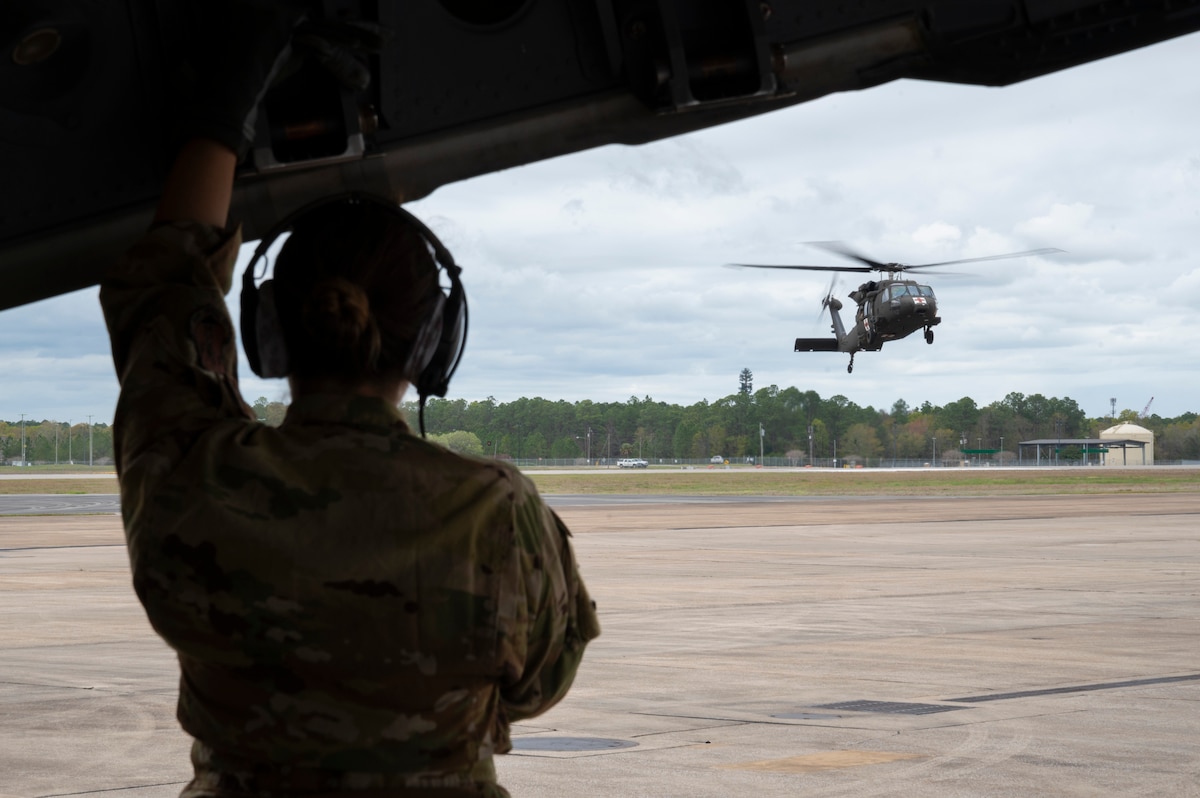Military members from all departments of the U.S. armed forces participated in the Southern Strike 2024-1 joint combat exercise at Gulfport Combat Readiness Training Center March 4-15.
The two-week exercise included approximately 425 military personnel from all over the United States, including Hawaii, Alaska, California, Minnesota, Texas, New York and Puerto Rico.
There are two iterations of Southern Strike 2024: The first, in March, is air-focused, while the second prioritizes ground operations and will occur in April.
During Southern Strike 2024-1, joint forces conducted training missions, preparing personnel for contingency response operations, aeromedical evacuation, security forces airfield protection, specialized fueling operations, and rotary aviation medevac and airlift.
"Contingency response is a function of the Agile Combat Employment concept that Southern Strike got after last year," said U.S. Air Force Col. Albert Germany, exercise deputy director. "CR teams are designed to rapidly deploy personnel to quickly establish and expand air bases and coordinate air operations."
The ability to quickly open an airfield from scratch for combat use in an austere environment will be a force multiplier if the United States faces great power conflict in the Indo-Pacific or European theaters. A contingency response team includes personnel from all career fields required to set up and sustain combat airpower and domestic operations.
The annual exercise provides valuable training scenarios to prepare fighters for various threats.
U.S. Airmen from the 297th Air Traffic Control Squadron, Hawaii Air National Guard, spent the first week of Southern Strike 2024-1 training at Gulfport CRTC and spent the second week at Camp Shelby Joint Forces Training Center in a simulated hostile environment.
"We are training to rapidly pack up, airlift, and set up mobile air traffic control and landing systems equipment. We temporarily relocated 37 Air National Guard personnel from Hawaii to Mississippi to operate, maintain, and sustain that equipment," said Capt. Eric Korpi, the director of operations of the 297th Air Traffic Control Squadron. "Gulfport CRTC and Camp Shelby provided a one stop shop for the type of services, logistical support, expertise, and numerous training locations we need to simulate a real-world deployment setting that we might encounter during conflict with a near-peer or peer competitor."
Aeromedical evacuation operations training was another core training set at Southern Strike 2024-1.
"AE is the feel-good story of the Air Force. We can go to the point of injury in the new Agile Combat Environment as well as provide patient movement in well-established theaters already in existence," said Senior Master Sgt. Robert Buresh of the 109th Aeromedical Evacuation Squadron, Minnesota Air National Guard. "Coming to Southern Strike allows us to polish our ground and air operations to provide the best care for our fellow service members. Plus, coming to Mississippi during the winter is always welcome for us, too!"
The 109th AES and 146th AES, California Air National Guard, will use their Southern Strike 2024-1 training to provide casualty care and expedited medical airlift in combat environments, saving the lives of forward-deployed Americans, allies and partners.
Gulfport CRTC can accommodate up to 100 fighters and approximately 75 larger airlift and refueling aircraft. Camp Shelby Joint Forces Training Center, 60 miles north of Gulfport, is the largest state-owned mobilization and training site in the United States.
"The Southern Strike exercise allows our joint force from across the U.S. to deploy to the CRTC, Camp Shelby and other Mississippi training sites and operate in an expeditionary austere setting," said U.S. Army Col. Christopher Cooksey, exercise director of Southern Strike 2024. "From start to finish, this entire exercise is preparing our Airmen and Soldiers for future deployments throughout the worldwide operating environment."









